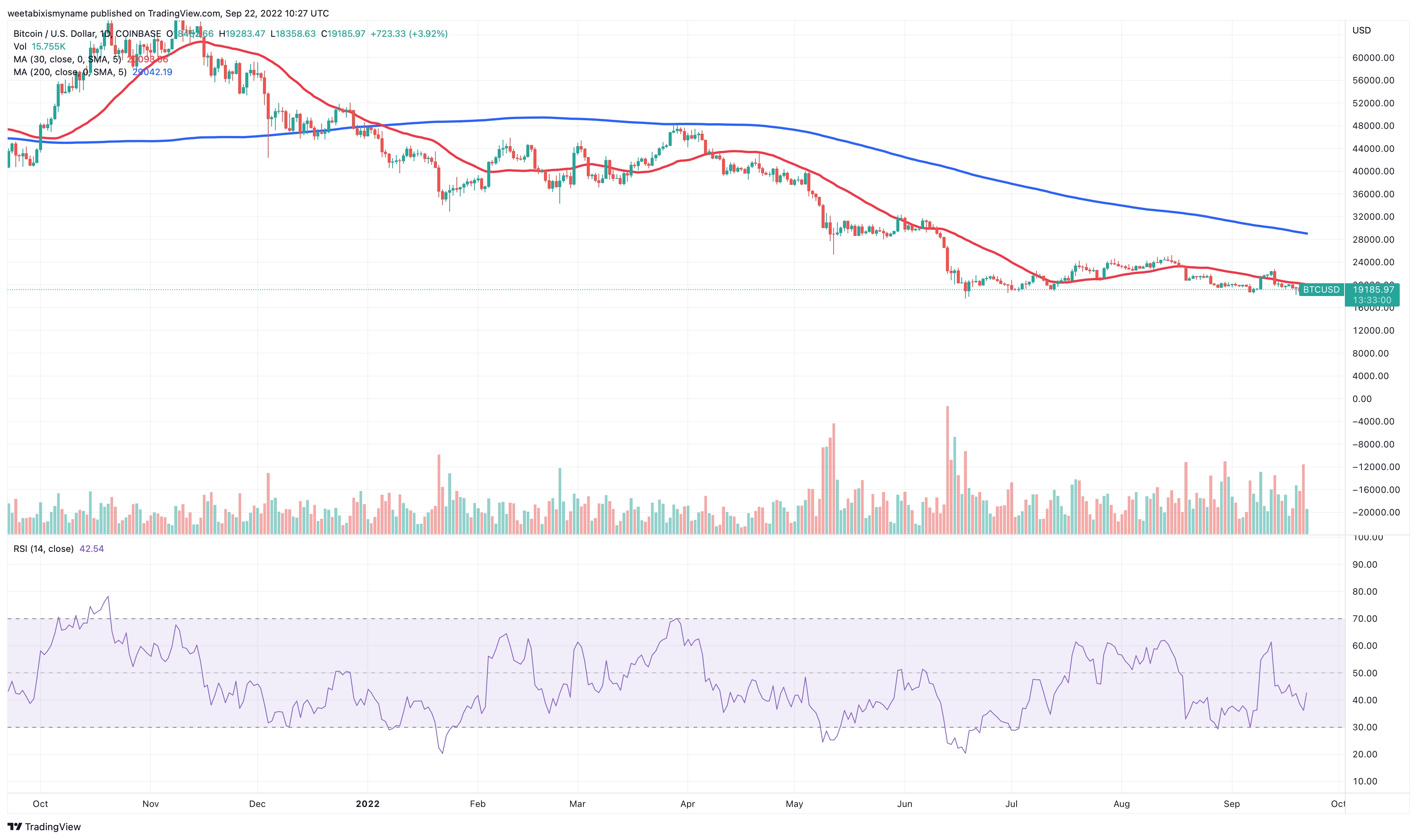Here’s Why The Bitcoin Price is Down But Far From Out

The bitcoin price remains down today, with its 0.5% gain in the past 24 hours cancelled out by a 5% drop in a week and 10% fall in a month. However, it has rebounded by nearly 4.8% since reaching a 24-hour low of $18,262 yesterday, which it did in the wake of the Federal Reserve bumping interest rates in the US by 0.75%.
Ongoing rate hikes mean that the price of BTC is likely to remain depressed in the short- and probably medium-term, with central banks elsewhere (e.g. the UK, Switzerland, Norway) following the Fed’s example. The ongoing war in Ukraine also ensures the continuation of an inflationary environment, even if recent developments suggest this conflict may have reached a new phase.
Nonetheless, with bitcoin’s support kicking in at around the $18,300 level, it’s arguable that the original cryptocurrency won’t fall any lower in the difficult months ahead. And with major financial institutions still continuing to announce and launch new bitcoin- and cryptocurrency-related services, the stage is being set for a substantial resurgence once the global economy picks up again.
Why the Bitcoin Price is Down Yet Again
At $19,143, bitcoin’s current price marks a 52.6% dive in 12 months, as well as a 72% plunge since its all-time high of $69,044, set back on November 10, 2021.

The coin’s indicators remain subdued. Its relative strength index (in purple) is stuck at around 40, signalling slight overselling relative to recent price movements. At the same time, its 30-day moving average (in red) is significantly below its 200-day average (in blue). At some point, it’s due to overtake the longer term average, something which could herald a breakout.
Regardless of technicals, bitcoin’s fundamentals are as healthy as ever. In addition to asset manager BlackRock opening its private BTC spot fund in August, more financial institutions are getting involved in the bitcoin space.
This includes Nasdaq, which has just announced its own digital asset unit aimed at attracting institutions towards bitcoin investment. It also includes Japanese banking giant Nomura, as well as Société Générale, which have both announced similar services in the past few days.
The point here is that the financial services industry is moving into bitcoin in particular and crypto more generally in a big way. And the more they open bitcoin investment and trading to their clients, the more potential liquidity and demand there is for a big bull market once macroeconomic conditions become more favouable.
Rate Hikes and Inflation
It’s encouraging to note that, during 2022’s bear market, $18,000 has stood as a fairly reliable support level for bitcoin. While it has fallen below $19,000 on a handful of occasions this year, it hasn’t really dipped under $18,000, and anyone holding onto their BTC is likely hoping it will stay this way.
Of course, it’s hard to predict the future of the global economy, but it does seem like most advanced economies have passed through their worst periods. Inflation has stopped rising in a handful of economies, while Ukraine has managed to regain large swathes of territory from Russian forces, holding out hope that it has reached the beginning of the end of its conflict with Russia.
As such, the market may not see any real interest rate rises after the end of this year, although some economists have predicted they could remain at relatively high levels until after 2023. Only time will tell where the global economy goes from here, but for now, it seems like the BTC price is clinging onto that $18,000 support level.




